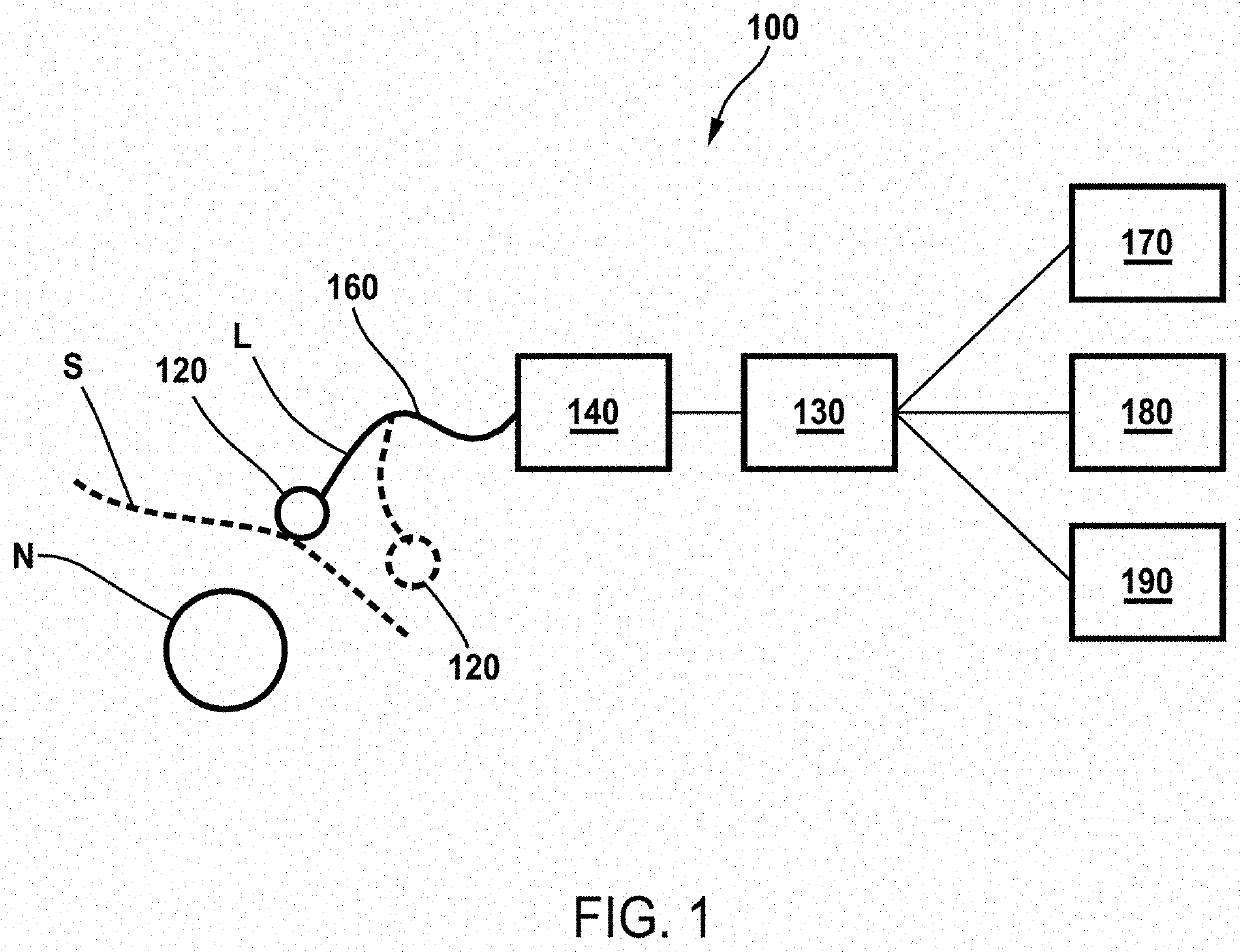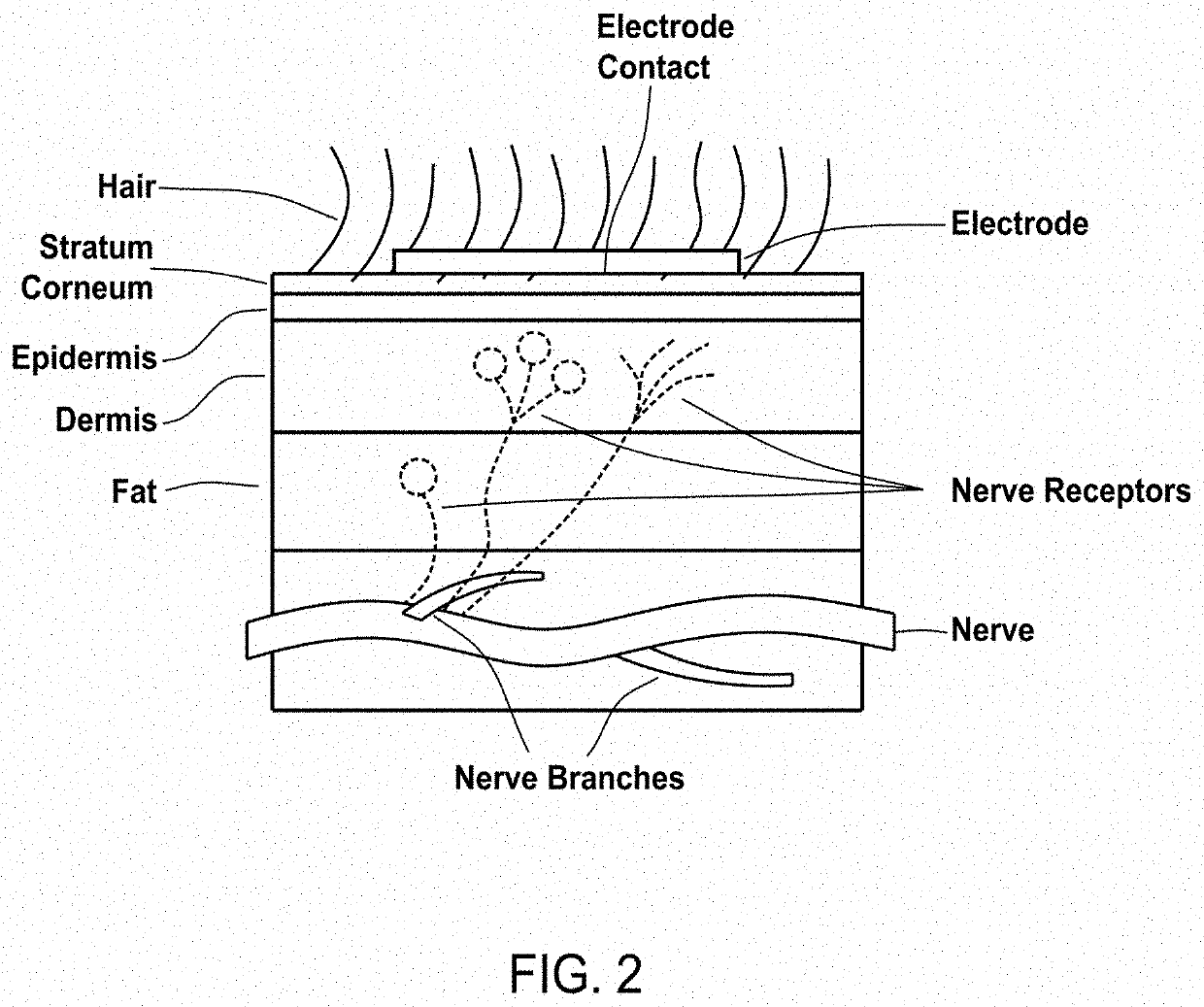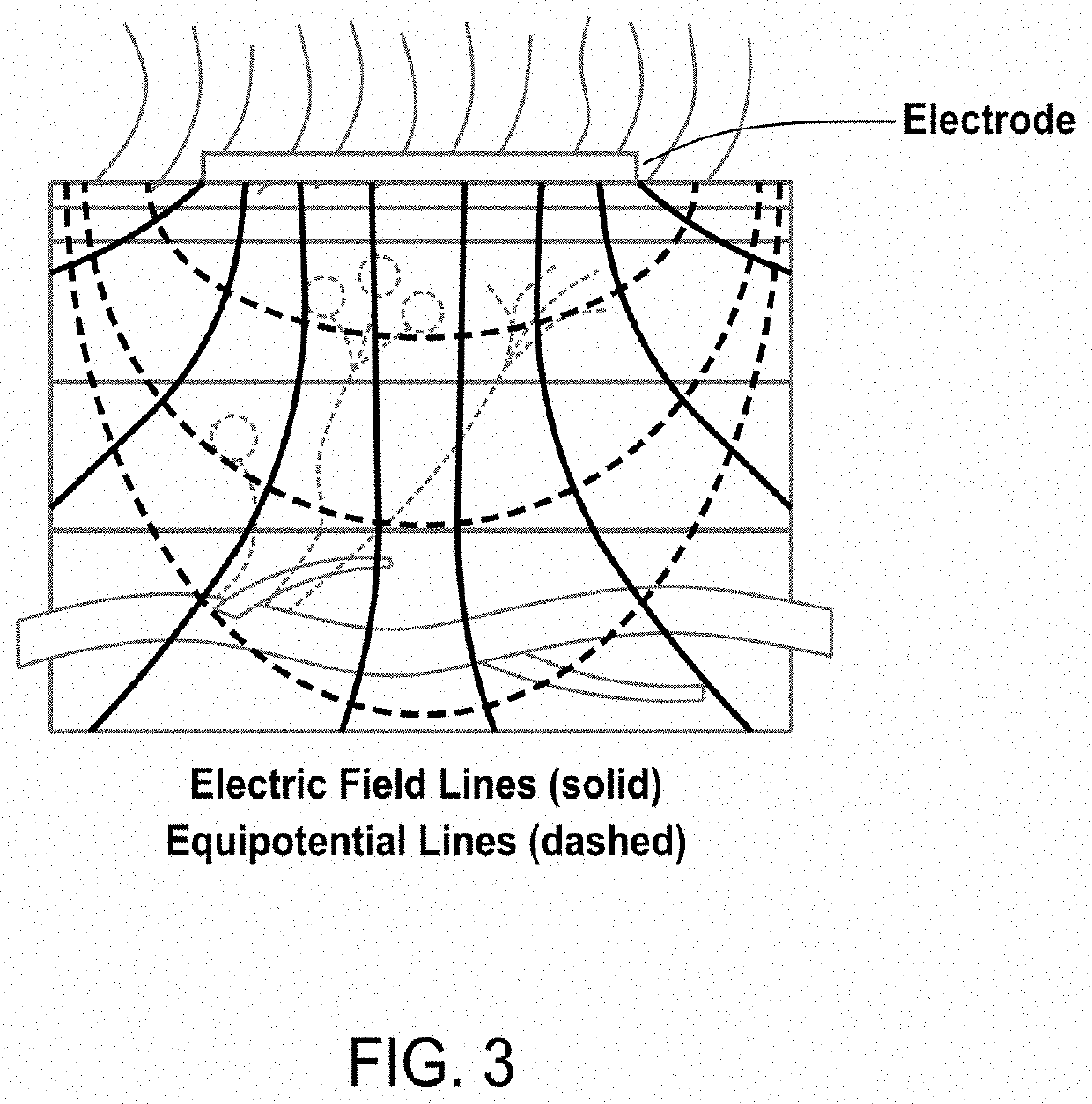Device and method to modulate a nervous system structure to non-invasively and non-destructively inhibit nervous signaling
a nerve and nonneural tissue technology, applied in the field of nerve and nonneural tissue activity modulation devices, can solve the problems of inability to inhibit nervous signaling, inability to perform non-invasive, non-destructive electrical stimulation, immediate loss of nerve function, etc., and achieve the effect of preventing damage to the patient's skin/tissu
- Summary
- Abstract
- Description
- Claims
- Application Information
AI Technical Summary
Benefits of technology
Problems solved by technology
Method used
Image
Examples
example 1
[0302]In this example, able-bodied subjects were recruited and consented for the study using IRB-approved consent forms. Subject donned scrubs and were seated in a comfortable chair. The right leg was rested on an elevated foot rest and the right leg was instrumented with muscle recording electrodes and nerve stimulation electrodes. Skin temperature was monitored via a thermocouple. Local skin perfusion (e.g. blood flow) was monitored via a skin laser skin perfusion meter. Skin pH was monitored via a glass pH probe. Nerve stimulating and electromyography (EMG) recording electrodes were placed on the right leg to enable assessment of nerve and muscle function and delivery of the electrical stimulation to inhibit nervous signaling.
[0303]Assessment of nerve function: At the beginning of the session, the subject was instrumented with surface EMG recording electrodes over the abductor hallucis, flexor digiti minimi brevis, abductor digiti minimi, and gastrocnemius muscles. Electrical sti...
PUM
 Login to View More
Login to View More Abstract
Description
Claims
Application Information
 Login to View More
Login to View More - R&D
- Intellectual Property
- Life Sciences
- Materials
- Tech Scout
- Unparalleled Data Quality
- Higher Quality Content
- 60% Fewer Hallucinations
Browse by: Latest US Patents, China's latest patents, Technical Efficacy Thesaurus, Application Domain, Technology Topic, Popular Technical Reports.
© 2025 PatSnap. All rights reserved.Legal|Privacy policy|Modern Slavery Act Transparency Statement|Sitemap|About US| Contact US: help@patsnap.com



